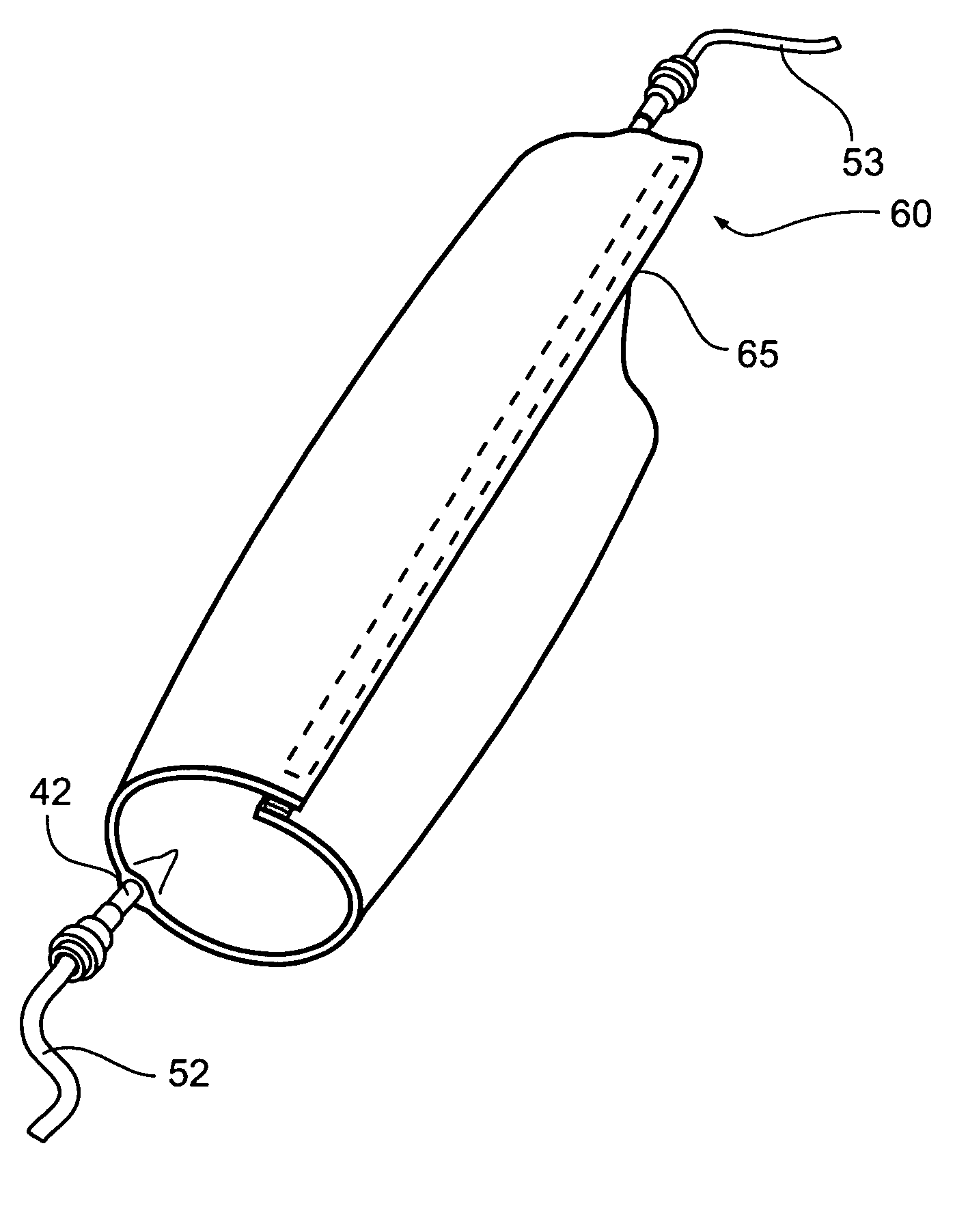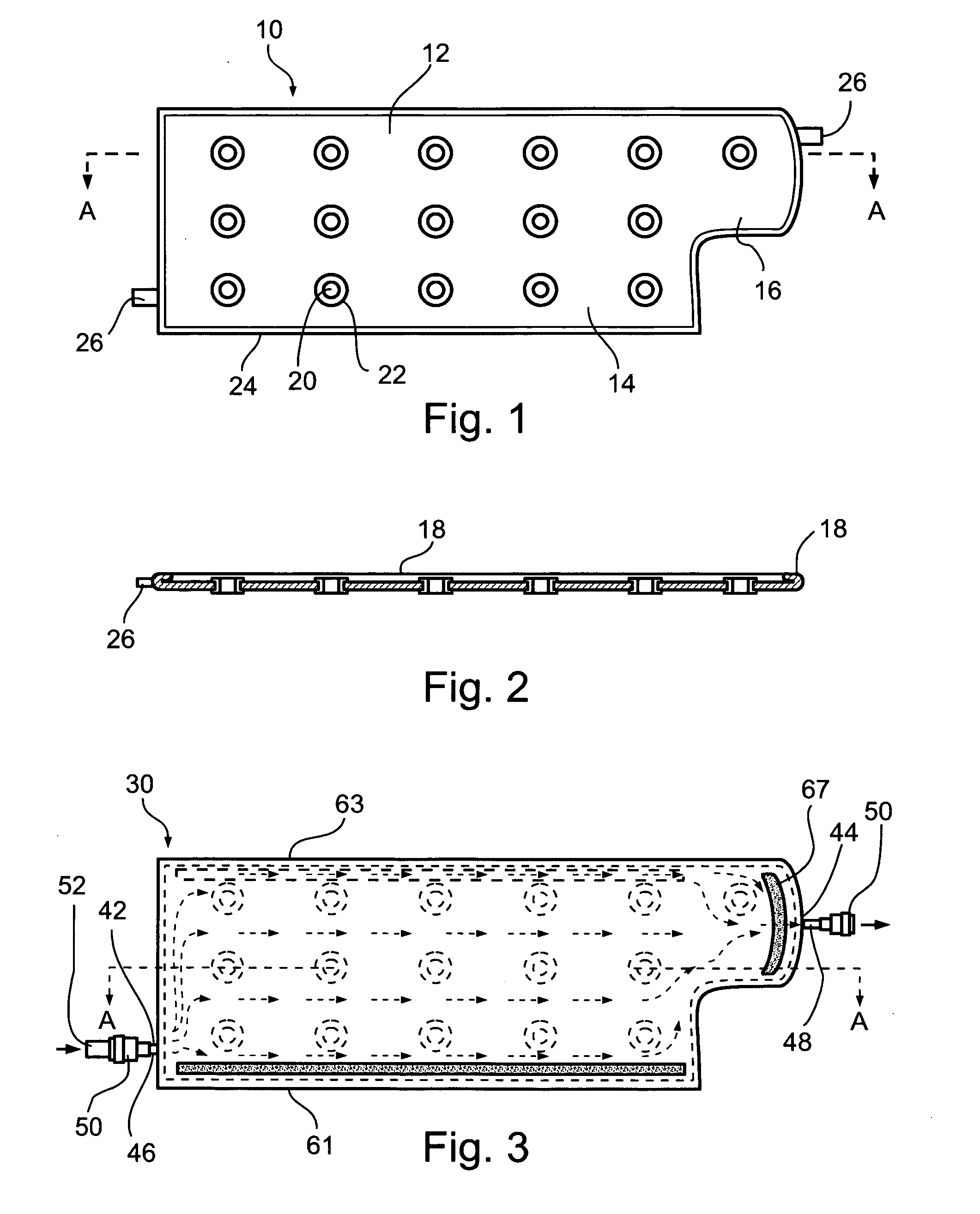Temperature regulating suit
a temperature regulation and suit technology, applied in the field of temperature regulation of the body, can solve the problems of garments not being suitable for heating patients, not being suitable for surgery, and not being suitable for use on patients during surgery
- Summary
- Abstract
- Description
- Claims
- Application Information
AI Technical Summary
Benefits of technology
Problems solved by technology
Method used
Image
Examples
Embodiment Construction
[0080] An aspect of the present invention is a device for the controlled heating or cooling of a portion of the body comprising: a contact surface; a plastically deformable, substantially sheet element configured to define the shape of the contact surface; and a heat transfer component, associated with the plastically deformable element for adjusting the temperature of the contact surface. According to an embodiment of the present invention there is provided a kit for the controlled heating or cooling of a portion of the body, the kit comprising: at least two devices for the controlled heating or cooling of a portion of the body, substantially as described above.
[0081] An aspect of the present invention is a self-sealing valve substantially of two strips of flexible material conjoined at two sides so as to substantially define a flattened tube.
[0082] An aspect of the present invention is of a method for heating or cooling at least a portion of the body of a person, the method comp...
PUM
 Login to View More
Login to View More Abstract
Description
Claims
Application Information
 Login to View More
Login to View More - R&D
- Intellectual Property
- Life Sciences
- Materials
- Tech Scout
- Unparalleled Data Quality
- Higher Quality Content
- 60% Fewer Hallucinations
Browse by: Latest US Patents, China's latest patents, Technical Efficacy Thesaurus, Application Domain, Technology Topic, Popular Technical Reports.
© 2025 PatSnap. All rights reserved.Legal|Privacy policy|Modern Slavery Act Transparency Statement|Sitemap|About US| Contact US: help@patsnap.com



